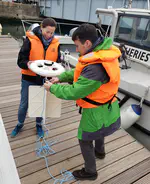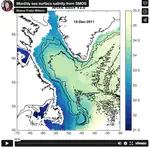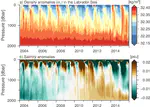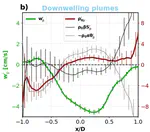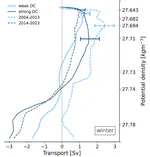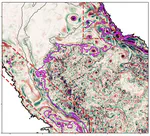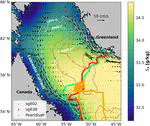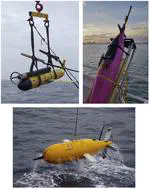 Frajka-Williams
Frajka-WilliamsProject - TERIFIC
Targeted Experiment to Reconcile Increased Freshwater with Increased Convection
Synopsis
The ocean Meridional Overturning Circulation (MOC) is responsible for poleward heat transport, and deep storage of heat and carbon. Climate models generally predict that a slowdown of the MOC will occur this century, with dramatic regional and global climate changes, but how the slow-down will occur is subject to debate.
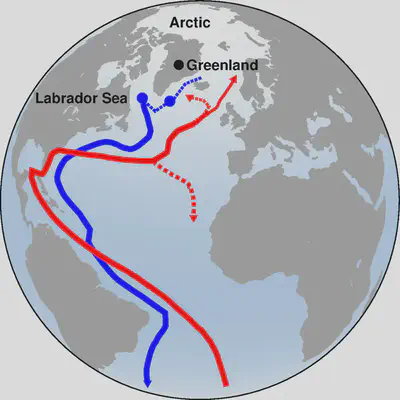
It is widely recognised that convection – the downward limb of the MOC – is sensitive to freshwater fluxes, and recent investigations have suggested that the increased melt from the Greenland Ice Sheet has already reduced convection. Yet in 2015, convection returned, and was anomalously strong. Despite the expectation that the MOC is sensitive to freshwater forcing, we do not understand the processes by which freshwater inputs influence the MOC.
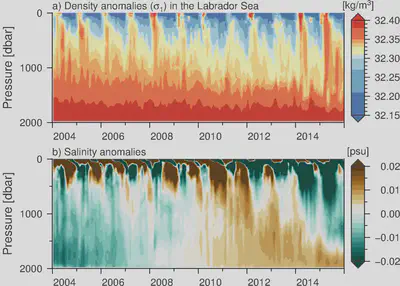
The two key gaps in our understanding are: how freshwater reaches the regions of deep convection, and the relative importance of freshwater to convection and restratification. Numerical simulations give conflicting results on freshwater pathways, and convective parameterisations neglect small-scale restratifying processes. Traditional observational approaches cannot capture the spatial and temporal variability of these processes without inordinate cost.
TERIFIC addresses these gaps in understanding through new observations, leveraging recent advances in small-scale electronics to deploy large numbers of mini-drifters on the shelves of Greenland, and employing subsurface and surface autonomous platforms to characterise the balance of processes controlling convection and restratification.
The analysis of these observations will answer fundamental questions about how freshwater reaches and affects the regions of deep convection, and enable a critical ground truth of numerical simulations of these processes for climate models.
Aims
TERIFIC aims to identify processes and timescales by which freshwater from northern high latitudes can reach and influence deep convection. Direct, seasonally-resolving observations of convective processes under the influence of surface forcing will be used to test the relative importance of different processes at determining convective intensity, and will form a benchmark for numerical simulations.
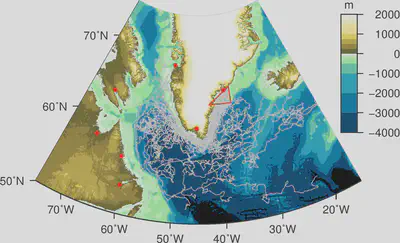
TERIFIC is a high-risk experiment, with autonomous technologies deployed in a harsh environment, new drifter technology being deployed, and applying autonomous surface vehicle data to estimate surface fluxes. But the gains on offer are substantial. While these autonomous platforms are becoming more routine, the novelty in this experiment lies in their synergistic use to capture multiple parts of the same problem at high resolution over seasonally-resolving timescales:
Large numbers of drifters used to capture a full annual cycle of pathways of surface water transport,
Autonomous underwater vehicles deployed to resolve small vertical and horizontal scales of water properties, vertical velocities and turbulent dissipation during convection, the months leading up to it, and the continuous restratification processes, and
Concurrent deployment of a surface vehicle to make direct measurements of near surface meteorological conditions, to improve estimates of the surface forces driving deep convection.
This remarkable dataset will be maximised by applying new insights and analysis techniques from field experiments around the world. These observations and their analysis will extend the state-of-the-art for autonomous, system-capturing ocean observations, and will deliver new insights into a key localised process of climate change. The results will serve as a benchmark for numerical models in simulating both cross-shelf exchange and convection.
Funding
- PI: Eleanor Frajka-Williams, EU grant number 803140
